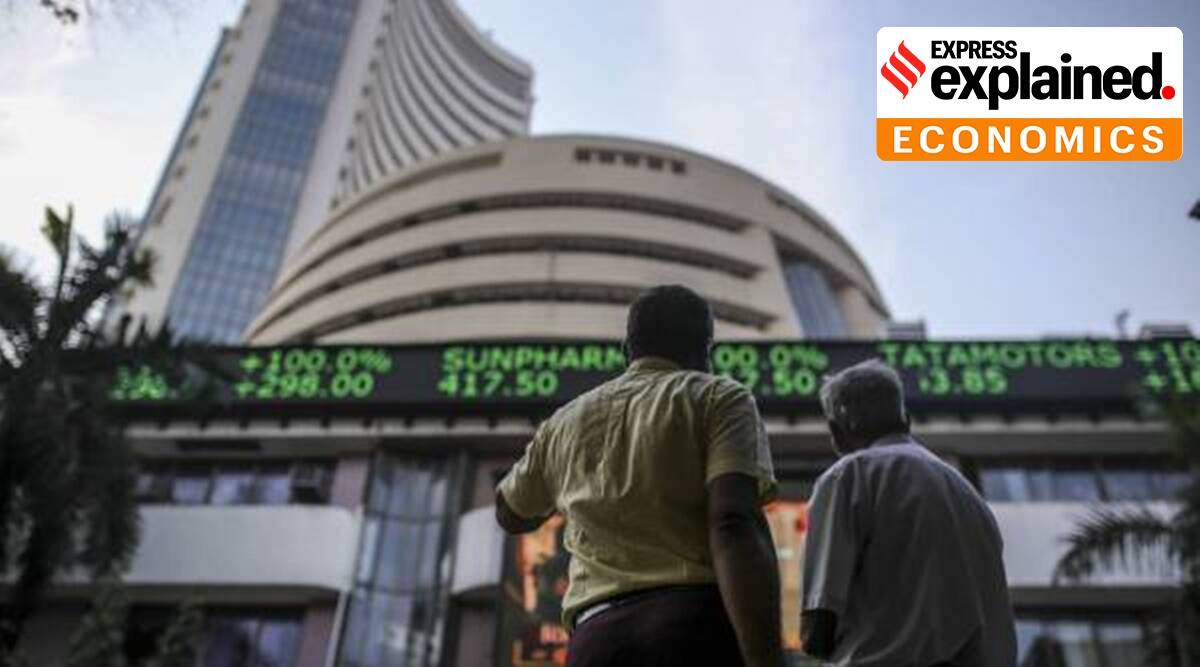On Monday, the benchmark Sensex closed with a loss of 1,546 points at 57,491.51 and the NSE Nifty Index plunged 468 points, or 2.66 per cent, at 17,149.10. Why are markets falling and what should investors do?
Indian stock markets are undergoing a sharp correction driven by sharp fall in global markets amid indications that US Federal Reserve will tighten the liquidity and hike interest rates. On Monday, the benchmark Sensex which crashed by 2,000 points intra-day finally closed with a loss of 1,546 points at 57,491.51 and the NSE Nifty Index plunged 468 points, or 2.66 per cent, at 17,149.10.
Why are markets falling?
Investors are bracing for a Federal Reserve panel meeting later this week, where it is expected to confirm it will soon start sucking out the liquidity that has supercharged growth stocks in recent years. Market participants are expecting cues on the pace at which the US central bank will end its bond purchase programme, as well as on when it might begin reducing the size of its massive balance sheet to curb inflation. Investors also expect the Fed to hike interest rates in March, for the first time since the start of the Covid-19 pandemic, while already pricing in four rate hikes in 2022.
According to a Morgan Stanley report, the reason for the Fed’s sharp pivot is obvious as inflation has overshot its goals, leading to problems for the real economy and the White House. When the Fed first announced its inflation-targeting policy in summer 2020, it was appropriate given the deflationary effects of the pandemic. Therefore, it’s now just as appropriate for the Fed to tighten at an accelerated pace to fight the inflation overshoot, it said.
Adding to the caution were concerns about a possible Russian attack on Ukraine with the US State Department pulling out family members of its embassy staff in Kyiv. US President Joe Biden was considering sending thousands of US troops to NATO allies in Europe along with warships and aircraft.
The prospect of higher borrowing costs and more attractive bond yields has taken a toll on tech stocks with their lofty valuations, leaving the Nasdaq down 12 per cent so far this year and the S&P 500 nearly 8 per cent. The rout was exacerbated by a slide in Netflix, which tumbled almost 22 per cent on a gloomy forecast for subscriber growth, shedding $44 billion in market value.
What are analysts saying?
The Sensex and Nifty are wiping down the gains of the previous couple of weeks very rapidly in this week’s crash. Monday’s crash came after the Sensex fell 2,186 points in the last week in line with global peers. Technology stocks are seeing a meltdown. Fear of Fed taper, increase in interest rates, and tightening of fiscal policy by the RBI are some reasons for not letting the market get confidence. The earning season hints at shrinking margins and a decrease in rural demand,” said Sonam Srivastava, Founder at Wright Research, an investment advisory firm.
“We see Indian markets following the global course with sell-offs across new age technology companies, and stocks trading at high valuations.
We believe that the worst of fears in terms of rate hikes, inflation, and covid spread is getting priced in. The markets can reach a bottom soon as we see the actual event of interest rate increase happening,” said Divam Sharma, Founder at Green Portfolio. “We are now seeing signs of reversal of margin financing-based speculation. One of the key reasons for that is the expected increase in interest rates across the world as liquidity becomes tight and inflation picks up,” said Abhay Agarwal, Founder, Piper Serica.
Global investors are right now extremely sensitive to the Fed commentary that will become available mid-week. Till then, analysts expect that leveraged positions will continue to be unwound, sharply and forcefully in some cases, leading to further sharp corrections.
What are the other near-term factors?
The market movement will be influenced by the forthcoming Union Budget in February. The monetary policy review by the Reserve Bank of India in the first week of February will also give an indication about the normalisation of accommodative monetary policy. While the recovery that has been underway in the Indian economy is encountering headwinds from a rapid surge in infections in a third wave marked by the rapid transmissibility of the Omicron variant, expectations that the variant may turn out to be more of a “flash flood than a wave” have brightened near-term prospects, the RBI had recently said.
Indian markets will continue to remain on the upper side of valuations and attract foreign capital over the coming years. There is a huge business opportunity for India over this decade as businesses will witness a surge in exports, import substitution, and benefits from PLI over the coming years. The investors should focus on business moats and valuations and see this fall as an opportunity to enter in the winner companies.
What should investors do?
Analysts expect savvy long-term investors to use this opportunity to add those companies to their portfolio that are seeing a correction in valuation but have solid long-term growth prospects. Buying these companies through these cyclical corrections has always proved to be beneficial. At the same time, investors should not rush in all at once but phase out their investment over the next couple of months. In certain parts of the market, valuations are still frothy. “Our sincere advice to investors is to invest only in companies that have a profitable business model and are leaders of their high-growth industries,” Agarwal said.
Nothing has changed fundamentally in the long-term economic growth strategy of India. Investors should stay on the right side of this growth trend by avoiding bottom fishing in speculative stocks with weak fundamentals. Long-term investors should avoid any knee-jerk reaction and stay invested.
Reference Link:- https://indianexpress.com/article/explained/stock-markets-crashed-what-now-7739377/

